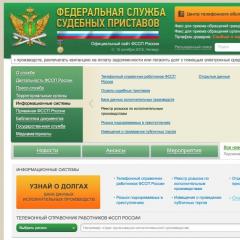How to flash documents threads
Despite the widespread introduction of new technologies and the translation of a part of the office work in electronic form, paper remains the main carrier in most state enterprises. Especially paper is like in various control and executive bodies: a tax, pension fund, fire inspection, courts, financial institutions, etc. That is why any entrepreneur should be able toproperly sew documents Numerical and register them. The firmware is usually performed using a thread with a needle, a stapler or special machines. We will tell you more about how to properly sew documents and affairs.
Firmware thread
In fact, no strict rules and requirements for stitching documents do not exist. Nevertheless, there is GOST R 51141-98 "Development and archival business" and order from Rosarhiva 12/23/2009 No. 76, which gives recommendations on the firmware of multi-page documents.
The correct firmware of documents will protect them from the substitution
How to do everything right? You will need a selo, gypsy needle, durable black thread, paper sheet and glue. Usually, the paper is stitched through three holes - one is made in the center of the sheet of about 1.5-2 cm from the edge, the second and third - on the sides of the sides of the existing at a distance of 3-5 cm. Polls are made sewed - if you do not have enough strength to pierce immediately All pack, you can split it into several parts. Below we give an examplehow to flash documents with threads and photo process.
Note:if you have a drill or screwdriver and drill, you can simply drill a pack of paper. The drill diameter should be about 6-8 mm.
Putting firmware begins on the back side. Schedule in the needle thread and drag it through the central hole, leaving the "tail" at 7-10 mm. Then insert the needle into the upper hole already with the front side and stretch the thread on the back.

We start with the central hole, stretch through the top and go down to the bottom
Next, you need to drag the needle through the bottom hole, output it on the front side, and then stretch it into the central to the existing "tail". Now you can cut off the thread, leaving at least 7 cm (if it is necessary to printe the case, then leave the reserve of centimeters 15). Tie the beginning and end of the threads, and glue a small piece of pure paper on the knot. If these are papers of strict reporting, then the "tails" are glued to the last sheet with a paper square and printing is put on it.

Nodes after firmware documents rushed with paper square
Allowed firmware of documents thread And in two holes. Usually this method is practiced in the presence of holes. The scheme changes slightly - the needle is started to the bottom hole from the back side, it is left "tail" long at least 7 cm. Then through the top hole of the needle with a thread returns backwards. Next, cut a thread so that you have a second tail of a long 7-10 centimeters and tie it with the first. The ends of the thread are lowered down, and a rectangular piece of paper is pasted on the node with dimensions 2 by 7-8 cm.
To securely fix the pack can be sewed and through 4 punctures. In this case, the needle has been done from the second hole, get to the top, are dragged once again through the second and fed on the third and fourth. The crosslink is made on the third hole, and the entire strip of the thread is stuck with the paper.
Note:to cross the documents, it is not recommended to use the usual thread, since it is quite continuing. You need to either fold it several times or use a special kapron twine.
Sometimes documents are sewn with a transparent fishing line, but in its characteristics it is worse than the thread. The main thing is that all three (four) holes are made vertically on one line. From the wide edge of the sheet, it is usually 1.5 cm. The firmware is always starting from the rear so that the nodes are behind and do not spoil the appearance.

Be sure to specify the number of pages and place the signature
Requires documents
After we have learnedcorrectly flash documents let's learn how to assure them. For this, the numbering of sheets is carried out. Tails are sealed with a small paper rectangle, which is written with a handle: "Fasten, numbered, fastened by signature and seal." Next, the number of sheets in digital and alphabetic form is indicated, the printing, painting and initials are placed. It is necessary to do it so that the part of the signature and printing is both on the plated rectangle, and on the last sheet. This is done in order to if someone cut the thread, it would be immediately visible. It is also usually indicated by the firmware and certification date of digital form.
Note: Only the responsible person or a person who is proxy can be certified. Therefore, with the signature, the name of the signator is set.


